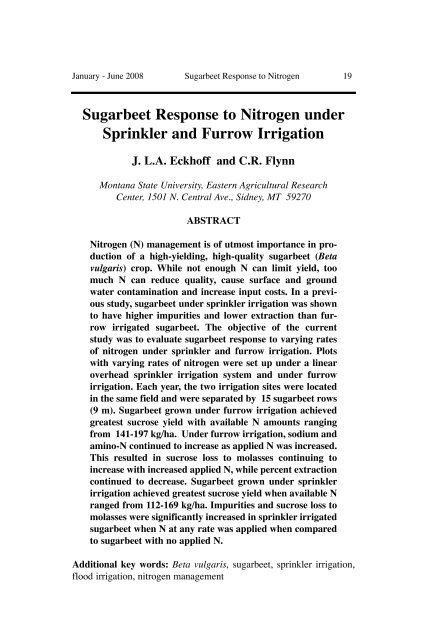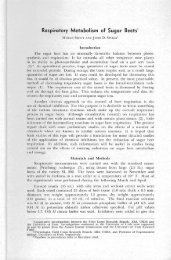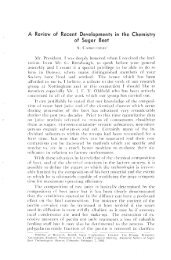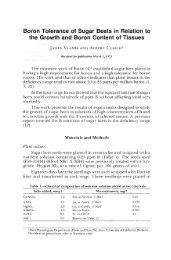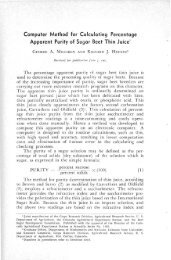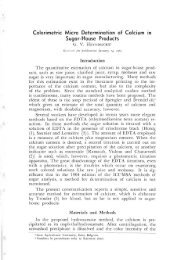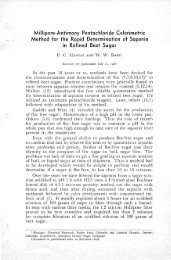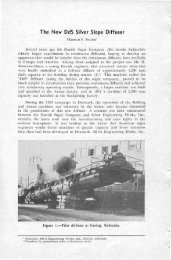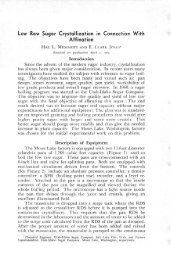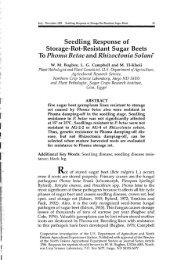Journal of Sugar Beet Research - Vol
Journal of Sugar Beet Research - Vol
Journal of Sugar Beet Research - Vol
Create successful ePaper yourself
Turn your PDF publications into a flip-book with our unique Google optimized e-Paper software.
January - June 2008 <strong>Sugar</strong>beet Response to Nitrogen 19<br />
<strong>Sugar</strong>beet Response to nitrogen under<br />
Sprinkler and Furrow Irrigation<br />
J. L.A. eckh<strong>of</strong>f and C.R. Flynn<br />
Montana State University, Eastern Agricultural <strong>Research</strong><br />
Center, 1501 N. Central Ave., Sidney, MT 59270<br />
ABSTRACT<br />
nitrogen (n) management is <strong>of</strong> utmost importance in production<br />
<strong>of</strong> a high-yielding, high-quality sugarbeet (Beta<br />
vulgaris) crop. While not enough n can limit yield, too<br />
much n can reduce quality, cause surface and ground<br />
water contamination and increase input costs. In a previous<br />
study, sugarbeet under sprinkler irrigation was shown<br />
to have higher impurities and lower extraction than furrow<br />
irrigated sugarbeet. The objective <strong>of</strong> the current<br />
study was to evaluate sugarbeet response to varying rates<br />
<strong>of</strong> nitrogen under sprinkler and furrow irrigation. Plots<br />
with varying rates <strong>of</strong> nitrogen were set up under a linear<br />
overhead sprinkler irrigation system and under furrow<br />
irrigation. each year, the two irrigation sites were located<br />
in the same field and were separated by 15 sugarbeet rows<br />
(9 m). <strong>Sugar</strong>beet grown under furrow irrigation achieved<br />
greatest sucrose yield with available n amounts ranging<br />
from 141-197 kg/ha. under furrow irrigation, sodium and<br />
amino-n continued to increase as applied n was increased.<br />
This resulted in sucrose loss to molasses continuing to<br />
increase with increased applied n, while percent extraction<br />
continued to decrease. <strong>Sugar</strong>beet grown under sprinkler<br />
irrigation achieved greatest sucrose yield when available n<br />
ranged from 112-169 kg/ha. Impurities and sucrose loss to<br />
molasses were significantly increased in sprinkler irrigated<br />
sugarbeet when n at any rate was applied when compared<br />
to sugarbeet with no applied n.<br />
Additional key words: Beta vulgaris, sugarbeet, sprinkler irrigation,<br />
flood irrigation, nitrogen management


